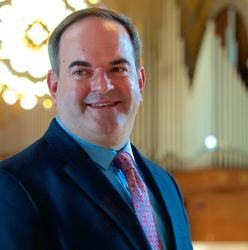
Peter Latona composed the winning entry in the Conference of Roman Catholic Cathedral Musicians’ (CRCCM) 2016 Propers Composition Contest. Settings for the entrance and communion antiphons for the Ordination of Priests for the new Roman Missal were received from 22 contestants from across North America and Europe.
Latona’s Propers were performed under his direction during the CRCCM annual meeting, January 2–5, at Blessed Sacrament Cathedral, Detroit, Michigan, and at the Cathedral of Our Lady, Queen of the Most Holy Rosary, Toledo, Ohio. The composer was presented a $2,000 prize.
The antiphons are scored for congregation, choir, cantors, organ, and optional brass and timpani. Judges were Michael Batcho, Marie Rubis Bauer, Matthew Geerlings, Brian Gurley, and James Savage. Anthony DiCello was committee chairperson.
Peter Latona is music director for the Basilica of the National Shrine of the Immaculate Conception, Washington, D.C. For information: www. crccm.org.

